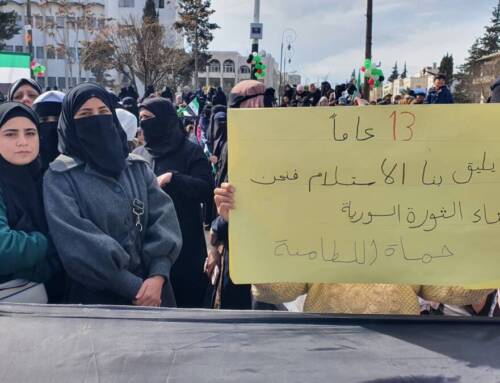After victories against Islamic State, SDF redefines its role
As the US-backed Syrian Democratic Forces (SDF) continue their campaign […]
31 October 2017
As the US-backed Syrian Democratic Forces (SDF) continue their campaign against the Islamic State in northeastern Syria, newly captured towns and cities are facing the monumental task of rebuilding their communities.
In the power vacuum left by the Islamic State (IS) in those cities and towns—such as Tabqa and Raqqa—local councils established by the SDF are taking control of civilian affairs.
Where does that leave the Kurdish-led, American-backed military coalition that drove out IS?
The SDF’s role now is not just to expel IS from Syrian cities, says SDF spokesman Mustafa Bali, “but also to continue protecting them.”
The SDF will coordinate with local councils to address security needs, he tells Syria Direct’s Mohammad Abdulssattar Ibrahim, as residents determine for themselves what type of governance they prefer in the years to come.

Residents may choose to join the semi-autonomous Federation of Northern Syria governed by the Self-Administration, the spokesman says. The SDF is the official army of the federation, which includes the Kurdish-majority areas of northern Syria commonly referred to as Rojava.
The Self-Administration is pursuing a federal project in Syria based on the ideology of Abdullah Ocalan, the jailed leader of the Kurdistan Workers Party in Turkey. Ocalan rejects the traditional concept of a nation-state and instead proposes a federal system in which decision-making power is left to local communities.
One form of government is certainly not an option, Bali adds—a return to Syrian government control.
“That simply can’t happen,” he says.
Q: What will the role of the SDF be after its fight against the Islamic State?
The SDF is a legitimate army for the Federation of Northern Syria. Since federalism is a political project that is ongoing and can be disseminated across all of Syria, the SDF, too, will be an ongoing [presence].
The SDF was not established because of Daesh—nor for us to one day ask: “What will we do after Daesh?”
The SDF’s job is not just [to liberate] these cities, but also to continue protecting them and to protect security and stability.
Q: What are SDF interests in the oil fields of eastern Syria?
We liberate Syrian land regardless of whether that land [has] oil fields or is merely desert and devoid of life entirely.
Q: In recent months, the SDF took control of a number of regions from the Islamic State. Have the administrative borders of Rojava expanded in turn?
No. Rojava was a geographical term, or one that indicates the areas where Kurds are widespread. It has a purely national significance.
When we talk about northern Syria, we are not talking about Rojava. We are talking about the Federation of Northern Syria, which is a geographic federation open to all constituencies that wish to take part. The SDF is the official army for this federation.
Q: What is the role of the SDF and the Self-Administration in cities that are now under SDF military control, but fall outside of the Federation of Northern Syria?
The SDF is a military force that fights terrorism and liberates cities.
The Self-Administration is an [administrative] model tested in Kobani, Qamishli and many of the cities in Rojava.
Liberated cities can look to the-Self Administration as one way to overcome crisis. The [Self-Administration] experiment can be disseminated to all cities in Syria.
The basic role of the SDF is to liberate [cities] and then protect the liberated cities, not to interfere with decisions made by residents nor with the type of administration [they choose].
Q: What does the relationship between the councils and the SDF look like, and what will it look like in the years to come?
The SDF is the legitimate force that will protect the liberated cities.
There is coordination and a relationship between the SDF and the local councils within the framework of securing military needs and the security required to protect the cities.
What will the situation look like in the years to come? We’ll have to wait until elected councils are formed to find out—they will decide what the relationship [with the SDF] will look like and what its mechanisms will be.
Q: The SDF is defending a border with the regime and its forces that spans hundreds of kilometers. How do you avoid conflict with the regime?
It is true that there are points of contact between us and the regime.
We try to avoid the outbreak of any peripheral conflicts, be they with the regime or armed factions like Euphrates Shield [Turkish-backed Syrian rebels along the Syrian-Turkish border], with whom we also share a border.
We also try to avoid opening additional fronts, because our focus right now is on fighting terrorism, including Daesh, Jabhat a-Nusra, Ahrar a-Sham and other terrorist factions like them.
So we do what we can to avoid conflict [with the regime].
Q: Would it be possible for the regime to regain control over Raqqa and other Arab-majority areas under SDF control?
It is not possible for the regime to return to these areas.
We can talk about a Syrian-Syrian arrangement, based on a national Syrian dialogue in which all sides of the Syrian conflict and all parties in Syria gather and search for a solution that satisfies all sides.
But the regime returning—that simply can’t happen.







